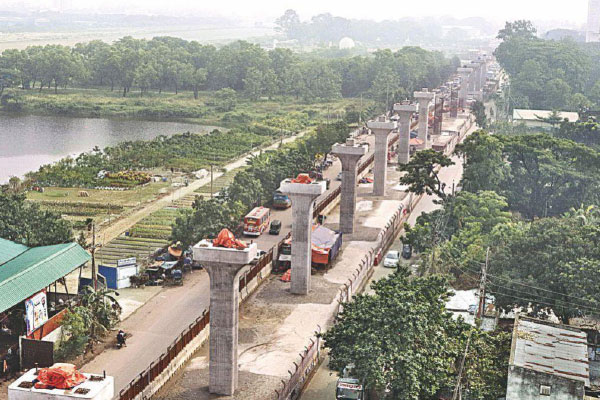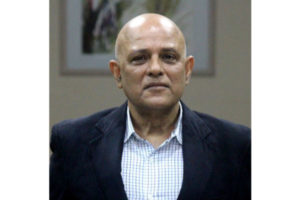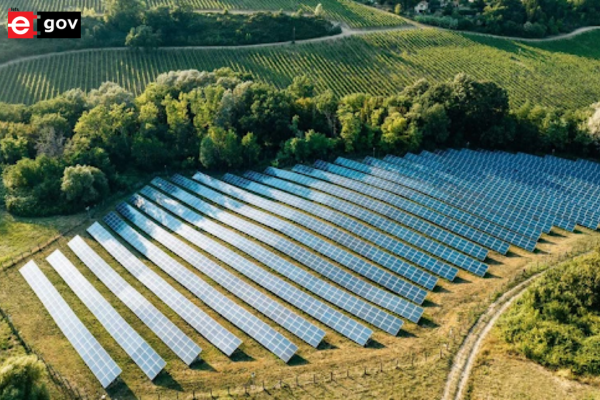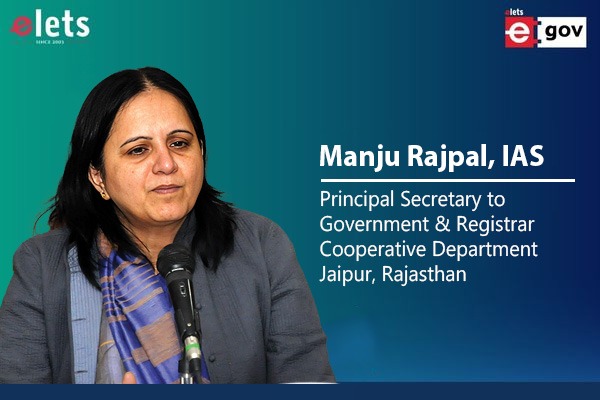
 By Dr. Khan Ahmed Sayeed Murshid
By Dr. Khan Ahmed Sayeed Murshid
Dr. Khan Ahmed Sayeed Murshid, is Director General at the Bangladesh Institute of Development Studies (BIDS). He has a Ph.D. in Economics from Cambridge University and specializes in a number of areas of research including food policy, food markets, rural credit markets, mobile financial services, value chain finance and human development. He has published extensively in top development journals and combines extensive research experience with familiarity with a wide range of development settings, including Bangladesh, sub-Saharan Africa, Sri Lanka, Indonesia, Pakistan, Myanmar, Thailand, Vietnam, Laos and Cambodia.
Macro and trade situation in Bangladesh remains healthy with strong GDP growth and poverty reduction, as a result of broad-based growth… Foreign Direct Investment (FDI) is beginning to rise, reserves remain comfortable, and imports are growing quickly.
There are 12 Asian LDCs in our region but these vary enormously in terms of income, human assets, type and nature of economic vulnerability, demographic patterns, dependence on agriculture, poverty and inequality, and stage of structural transformation. A number of these countries were initially selected for graduation in the 2015 triennial review of the CDC (namely, Bhutan, Nepal, Timor Leste and Solomon Islands) and a few more were approved for graduation in 2018 (including Bangladesh). Three specially designed indices are used to asses eligibility for graduation based on income, human assets and economic vulnerability: GNI per capita (which is a moving target – was set at $1242 per capita in 2015), HAI and EVI (indices reflecting human and economic vulnerability) were set at 66 or above and 32 or below.
The Progress
Bangladesh has made good progress in terms of meeting all the three graduation thresholds. It met the economic vulnerability criteria well in advance and the income criterion by 2018. The HAI index was also met well in advance. In other words, Bangladesh is the only LDC to meet all three criteria although for purposes of graduation, meeting any two are enough. This reflects Bangladesh’s solid performance against the criteria set.
Macro and trade situation of Bangladesh remains healthy with strong GDP growth and poverty reduction, as a result of broad-based growth. Despite recent worries about the slowdown of exports and remittances, and pressure on the domestic currency and on the balance of payments, the outlook remains very positive. Foreign Direct Investment (FDI) is beginning to rise, reserves remain comfortable, and imports are growing quickly.
At the sectoral level, agricultural growth is slowing down, the pace of industrialisation needs to be faster with diversification and new sources of growth, which also depends on productivity, human capital development and skilling of the labour force. The short and medium term challenges relate to lowering transactions costs, further economic reforms, investment in energy and infrastructure to create the incentives to raise private investment from 23% of GDP to 28-30 %. The poverty rate has declined to 23%.
How significant are LDC benefits?
In principle, there are three types of benefits that are most frequently discussed:
1. Benefits of duty free-quota free market access (so called DFQF)
2. Benefits related to concessional finance received due to the LDC status
3. Benefits from an array of general support measures (general ISM).
General International Support Measures (ISM)
These are numerous, usually of minor significance and principally relates to LDC contributions to the UN budget (which is capped), some travel funds for delegates to the UN, a number of scholarships and fellowships, assistance in developing a transition strategy, research opportunities, and so on. It would not be a fruitful inquiry to indulge into a detailed case-by-case analysis of general ISM for each country, mainly due to very limited usage and access, and severe lack of data. What is clear however is that access is made difficult by complex procedures and poor information, and are often simply not worth the trouble, especially for a country like Bangladesh. If these measures are to have greater impact it is necessary to make these more transparent and easily accessible.
Concessional Finance
The world ODA architecture has undergone huge changes in the last 50 years. Traditional donors and multilateral bodies, including the UN are no longer the only actors in the world of ODA. Important new actors have now emerged including South Korea, China, Russia and India. Much of the ODA is multilateral, e.g. by the World Bank, Asian Development Bank (ADB) and International Monetary Fund (IMF) – but these follow their own rules and classifications for their ODA rather than those suggested by UN. For example, the World Bank has its own classification system (low inclome, middle income, etc.), which it uses to decide on lending terms including concessional finance. Unfortunately, this classification does not correlate so well with the UN classification in terms of LDC, Developing Countries and advanced countries – which introduces additional confusion if not complexity.
Much of the ODA remains bilateral, by both the Asian donors as well as others. These flows are determined by a host of factors of which LDC status could be one – but does not have to be. In other words, ‘buy-in’ to the LDC classification is not as strong as it might have been (or actually was in the past).
If we examine the geographical distribution of ODA, we find that the following countries were the top ten beneficiaries in 2015 (in absolute, USD terms):
1. Afghanistan
2. India
3. Vietnam
4. Ethiopia
5. Indonesia
6. Pakistan
7. Syria
8. Kenya
9. Jordan
10. South Sudan
In other words, Bangladesh does not figure in this list. In per capita terms, Bangladesh receives the least ODA in the Asian LDC group (World Bank 2015).
Market Access
Market access is probably the most important LDC benefit for members, especially those who have begun to emerge as significant exporting countries for manufactures. This is certainly true for Bangladesh.
Total net official development assistance is worth around 2.57 billion dollars (2015). The largest bilateral donor is Japan who provided $8.93m as grant aid, $34.4m as technical cooperation assistance and $422m as loans (2015). USAID and other US agencies provided a total of $239.14m in 2016 – primarily spent on the health sector. The remaining aid flow originated mainly from multilateral sources, EU and UK. To put this in perspective, total ODA represents 1.32 % of GDP and 7.37 % of exports of goods and services. Technical cooperation grants amount to 0.92 % of GDP (2015). In other words, aid dependence is low but remains useful at the ‘margin’. However, the bulk of ODA is unrelated to LDC status while some of the technical cooperation and grants are possibly related to LDC membership. Graduation will not therefore affect aid flows to Bangladesh significantly.
Bangladesh benefits from a variety of preferential market access arrangements, and many of these are in fact attributable to its LDC status. The most important of these is its access to the EU market under the “Everything but Arms” (EBA) initiative, which provides DFQF treatment to its RMG exports. Under EBA all exports from Bangladesh are eligible for duty free treatment, subject to compliance with productspecific ROO. Inclusion of Turkey in the EU Customs Union also means that Bangladesh has similar access to the Turkish market as well. Access to the EU market has played a crucial role in the continued and sustained success of the sector.
Other countries also provide access under various GSP measures including Canada, Japan and the US – although the US has withdrawn GSP privileges citing labour standard issues including the right to form trade unions. Bangladesh is poised for graduation and fully expects to cross the final review in 2021. The main worry for Bangladesh is the increased duty its exports will face in EU, and to an extent in other less important trade destinations. The Bangladesh government is worried although the private sector seems confident it can weather the change. Estimates of ‘loss’ available seem to indicate a drop in exports of 6.5-7 % (UNCTAD 2016).
Bangladesh’s graduation strategy should be to improve its trade competitiveness and remove many of the inefficiencies and costs that still plague manufacturing and exports, including port congestion, poor roads, bottlenecks with energy supplies, improving labour skills etc. At the same time it needs to aggressively begin negotiations with existing partners as well as to seek out new export destinations including India, China, South Africa, Latin America while making more effort to diversify into new, higher value exports. Bangladesh’s advantage is that it has a strong private sector, which is able to respond to global opportunities. However, as the success of RMG has shown, this requires policy innovation and government support, including export incentives and pro-private sector regulatory framework. Measures to invest in mega infrastructure projects and 100 Special Economic Zones will go a long way in addressing these constraints.
Be a part of Elets Collaborative Initiatives. Join Us for Upcoming Events and explore business opportunities. Like us on Facebook , connect with us on LinkedIn and follow us on Twitter, Instagram.
"Exciting news! Elets technomedia is now on WhatsApp Channels Subscribe today by clicking the link and stay updated with the latest insights!" Click here!













